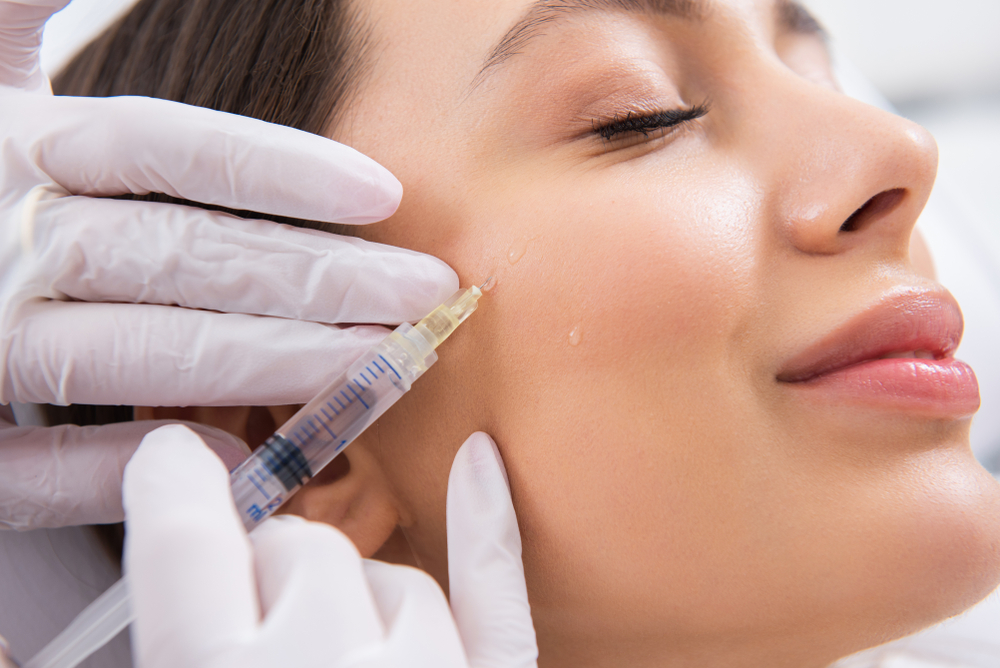As we age, our skin naturally loses volume and elasticity, leading to sagging cheeks and a less defined facial structure. Cheek fillers have emerged as a popular solution for restoring youthful contours and enhancing facial features without the need for surgery. This article will delve into how Cheek Filler injection in Dubai works, the different types of fillers available, and the overall process involved in this treatment.
Understanding Cheek Fillers
Cheek fillers are injectable substances designed to restore volume in the cheeks and improve facial contours. By utilizing specific materials that mimic the body's natural substances, these fillers can create a more youthful and rejuvenated appearance.

Types of Cheek Fillers
There are several types of fillers commonly used for cheek augmentation, each with its unique properties and benefits:
1. Hyaluronic Acid Fillers
Hyaluronic acid (HA) fillers are the most popular choice for cheek enhancement. HA is a naturally occurring substance in the body that binds with water molecules, providing hydration and volume. Popular brands like Juvederm and Restylane use HA to create a smooth, natural look. The advantages of HA fillers include:
- Immediate results: Patients often notice instant volume improvement after the procedure.
- Reversible: If desired, HA fillers can be dissolved using an enzyme called hyaluronidase, making it easy to adjust or remove the filler.
- Biocompatibility: Since HA is naturally found in the body, the risk of allergic reactions is minimal.
2. Calcium Hydroxylapatite Fillers
Calcium hydroxylapatite (CaHA) fillers, such as Radiesse, contain calcium microspheres suspended in a gel. This type of filler not only provides immediate volume but also stimulates collagen production over time. Benefits of CaHA fillers include:
- Long-lasting effects: Results can last up to a year or more.
- Natural feel: The structure of CaHA mimics bone, creating a more natural look and feel.
- Collagen stimulation: Over time, CaHA encourages the body to produce its collagen, further enhancing results.
3. Poly-L-Lactic Acid Fillers
Poly-L-lactic acid fillers, like Sculptra, work differently from traditional fillers. Instead of providing immediate volume, these fillers gradually stimulate collagen production, resulting in a more subtle enhancement. The benefits of poly-L-lactic acid fillers include:
- Gradual improvement: Results develop over several months, allowing for a natural transition.
- Long-lasting effects: Results can last up to two years due to the collagen-stimulating properties.
- Suitable for deeper wrinkles: This type of filler is effective for restoring volume in areas with significant sagging.
The Cheek Filler Procedure
The process of receiving cheek fillers is relatively straightforward and typically involves the following steps:
1. Consultation
Before undergoing treatment, patients should have a consultation with a qualified practitioner. During this appointment, the practitioner will assess the patient's facial structure, discuss their goals, and recommend the most suitable type of filler. This is also an opportunity for patients to ask questions and address any concerns.
2. Preparation
On the day of the procedure, the practitioner will cleanse the treatment area and may apply a topical anesthetic to minimize discomfort during injections. Some fillers also contain lidocaine, which helps reduce pain during the process.
3. Injection Process
Using a fine needle or cannula, the practitioner will carefully inject the filler into specific areas of the cheeks. The exact placement and amount of filler will depend on the patient’s desired outcome and the practitioner’s technique. This targeted approach helps to achieve a natural and balanced look.
4. Post-Treatment Care
After the injections, patients may experience mild swelling, redness, or bruising at the injection sites. These effects usually resolve within a few days. Practitioners will provide aftercare instructions, which may include avoiding strenuous exercise, excessive sun exposure, and alcohol for a short period following the treatment.
How Cheek Fillers Enhance Facial Contours
Cheek fillers work by adding volume and definition to the cheeks, which can significantly improve facial contours. Here are some of the key ways cheek fillers enhance appearance:
1. Restoring Volume
As we age, fat pads in the cheeks diminish, leading to a hollow appearance. Cheek fillers restore this lost volume, creating a more youthful, plump look.
2. Lifting Effect
By strategically injecting fillers into the cheeks, practitioners can create a lifting effect that improves the overall facial structure. This can help combat sagging and improve the jawline's definition.
3. Enhancing Symmetry
Facial symmetry is often associated with beauty and youth. Cheek fillers can help balance the features of the face, correcting asymmetry and creating a more harmonious appearance.
4. Softening Wrinkles
Cheek fillers can also soften the appearance of wrinkles and fine lines around the mouth and nose by providing additional support to the skin. This creates a smoother and more youthful complexion.
Conclusion
Cheek fillers are an effective and versatile option for individuals seeking to restore volume and enhance their facial contours. With a variety of filler types available, patients can choose the best option to meet their aesthetic goals. If you're considering cheek fillers, consult a qualified practitioner to discuss your options and create a personalized treatment plan that addresses your unique needs. By understanding how cheek fillers work, you can make an informed decision and achieve the youthful appearance you desire.





Comments